Note: if you want to use our SpeedGrader integration to assess students’ annotations, you’ll need to create your Hypothesis-enabled readings as Assignments rather than Module Items.
1. Select “Modules” from your course Navigation sidebar

2. Click the “+” button next to a Module to add a new Module Item

2. Select External Tool from the drop-down menu at the top of the Add Module Item screen
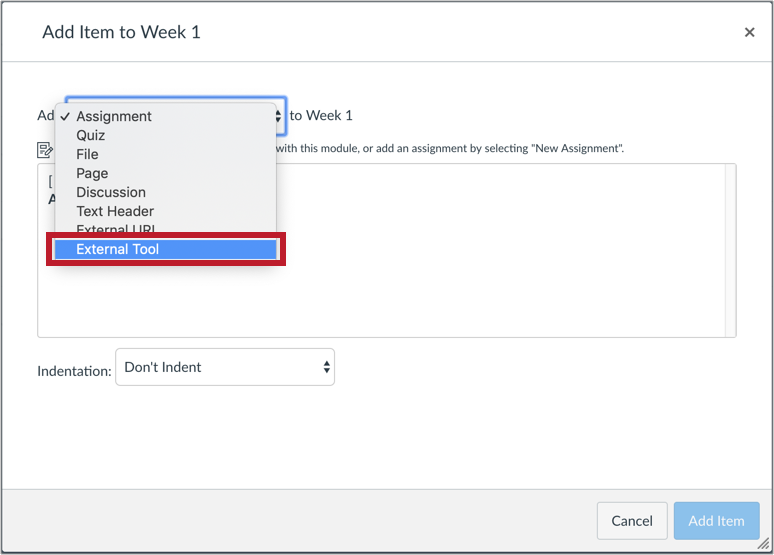
A list of tools that have been installed for your course site will appear. Click on Hypothesis.

3. Select the content source to use for your reading
You can choose to enter a public URL, select a PDF from your Canvas files, Google Drive, or OneDrive, pick a Canvas Page, choose a text from JSTOR or VitalSource, or add a video from YouTube or Canvas Studio. 
Note: The available picker options may vary depending on what integrations are enabled for your institution.
Expand the sections below for instructions to use each option:
Click the button that says Enter URL of web page or PDF. On the Enter URL dialog, enter a link to a public web page or PDF. Please note that the content at the link must be publicly viewable (i.e., not behind a login or paywall).

Click the Submit button.
You must upload PDFs to your Canvas file repository before completing the steps below. The Canvas File Picker does not allow for uploading new documents.
Click the button that says Select PDF from Canvas. You will see a list of PDFs that have been uploaded to your Canvas file repository.
Note: The Canvas File picker will show the folder structure of your course’s file repository only if the Canvas Folders integration is enabled for your institution. Otherwise, you will be shown a combined list of all PDFs available in your course. It could be difficult, therefore, to tell the difference between PDFs if they share the same file name, even if they are saved to different folders. We recommend changing the filename of the document you plan on using with Hypothesis so it will be obvious which PDF to choose from the list. If you wish to enable the Canvas Folders integration for your institution, please submit a request here.
Highlight the file you wish to use and click the Select button.

The Canvas Page you use in Hypothesis must be published and visible to students.
Click the button that says Canvas Page. You will see a list of Published pages from your course.
Select the file you wish to use and then click the “Select” button.
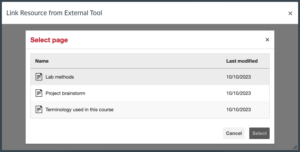
Using a PDF stored in Google Drive within the Hypothesis LMS app will change the sharing settings of the selected file to allow the PDF to be shown to anyone viewing the assignment. The exact setting on the file will be “Anyone with a link can view”. For more information please see our articles on Google Drive sharing settings and using Hypothesis with Google Drive.
Click the button that says Select PDF from Google Drive. You will be asked to select a Google account and/or authorize the Hypothesis LMS App to access Google Drive. To use an institutional Google Drive account you need to already have the ability to share documents with users outside your organization.
Search or browse to select a PDF to use in your reading. You may also click the Upload tab to upload a new PDF to use.
Only files for which you have edit permission are able to be used by Hypothesis.
Click on the file you want to use and then click the Select button.
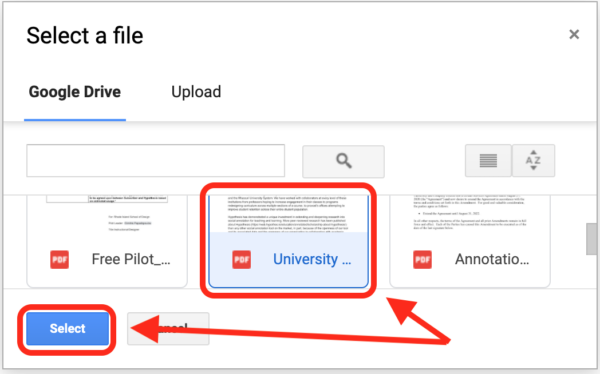
Note: This process will change the sharing permission of the selected Google Drive file to allow the PDF to be shown to anyone viewing the assignment. For more information please see our document about using Hypothesis with Google Drive.
Click the button that says Select PDF from OneDrive. You will be asked to select a Microsoft account and/or authorize the Hypothesis LMS App to access OneDrive. To use an institutional OneDrive account you need to already have the ability to share documents with users outside your organization.
Once logged on, browse to select a PDF to use in your reading. You may also select the Upload option to upload a new PDF to use.
Only files available in “My files” are able to be used by Hypothesis. You will be unable to use PDFs that belong in any Shared Libraries.
Click to select the file you want to use and then click the Open button.
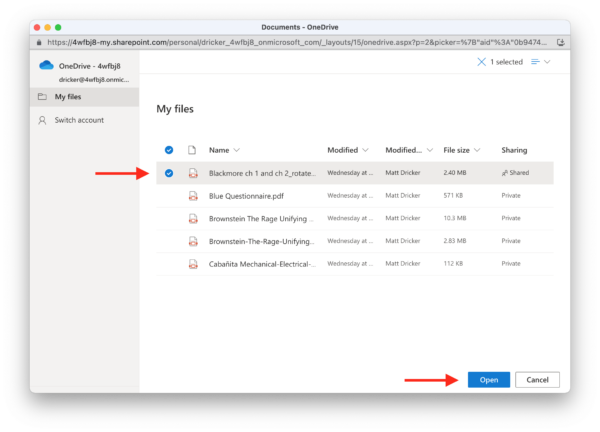
Note: This process will change the sharing permission of the selected OneDrive file to allow the PDF to be shown to anyone viewing the assignment. For more information please see our document about using Hypothesis with OneDrive.
When selecting a text from JSTOR it must be one that your school has license to access, and you must use the JSTOR stable URL. Complete instructions here.
Find and copy the Stable URL of the article you will be assigning from JSTOR.org. The stable URL is listed as part of the content metadata section of the page, usually under the title, author, and journal information.
Select the JSTOR article option in the Hypothesis picker during the assignment creation process and paste the stable URL into the text field. Click the right arrow and then accept JSTOR’s terms of use.

When selecting a text from VitalSource it must be one that your and your students have access to independent of Hypothesis. Complete instructions here.
Open your VitalSource bookshelf, and then find and copy either the text’s VBID or the text’s URL.

Select the VitalSource article option in the Hypothesis picker during the assignment creation process and paste the VBID or URL into the text field. Click the right arrow and then the “Select Book” button.

In the next screen select the starting point of the assignment (for example, you may have a specific assignment start on the book’s 2nd chapter instead of starting at the beginning of the book for every assignment).
With the starting point selected, click the Select button.
Choosing the YouTube option enables an instructor to create an assignment where users can watch the selected YouTube video and annotate its transcript simultaneously. Here’s what a YouTube assignment in Hypothesis looks like:
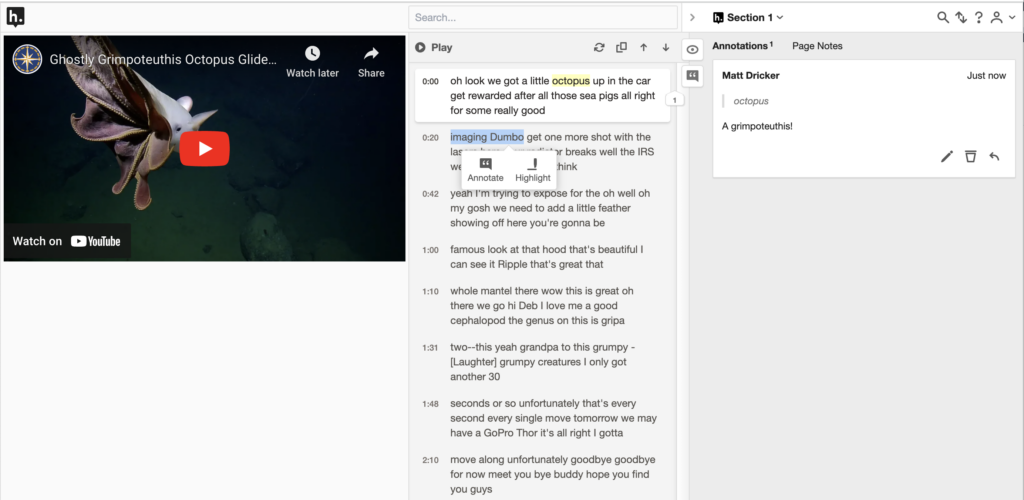
Click here to view the detailed steps on how to set up a Youtube video assignment in Hypothesis.
Choosing the Canvas Studio option enables an instructor to create an assignment where users can play the selected Canvas Studio content and annotate its transcript simultaneously. Here’s what a Canvas Studio assignment in Hypothesis looks like:
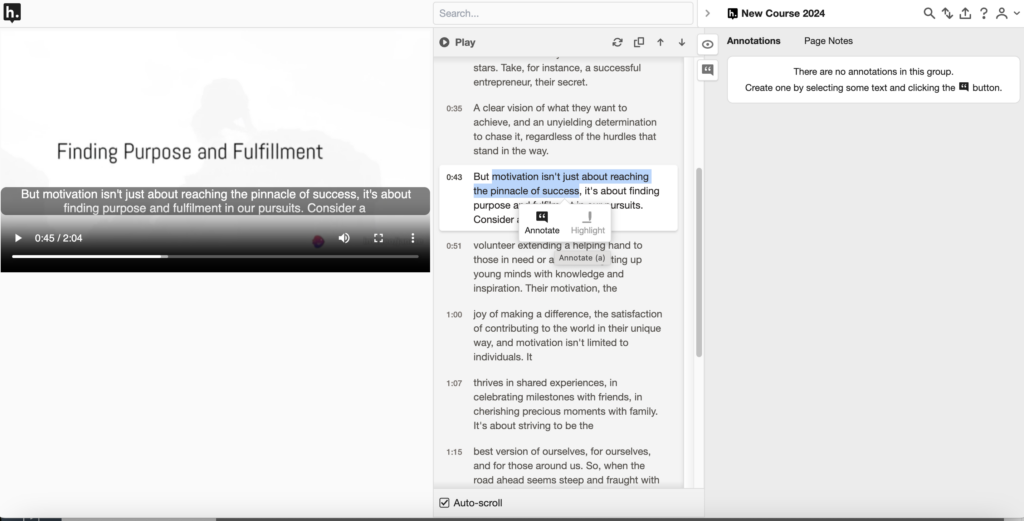
Click here to view the detailed steps on how to set up a Canvas Studio assignment in Hypothesis.
4. Indicate if this will be a Group assignment
Note: This feature requires that advanced Canvas integration has been enabled.
By default your Hypothesis reading will make all annotations visible to all students, or, if Sections integration is enabled, split into smaller reading groups based on Canvas Section membership.
You have the option to allow the creation of reading groups based on a pre-existing group set. To enable this, check the box to indicate This is a group assignment, then select the appropriate existing group set from the drop-down list.

If you do not want to designate the reading as a groups assignment, leave the Group assignment box unchecked.
Click the Continue button.
5. Rename your Module Item
Use the Page Name text box to give your Module Item a sensible title, then click Add Item:

You will now see your Hypothesis-enabled Module Item listed on the Modules page.
6. Preview your Hypothesis-enabled reading
The reading should open with the Hypothesis sidebar loaded.

You and your students will now be able to select text and annotate.